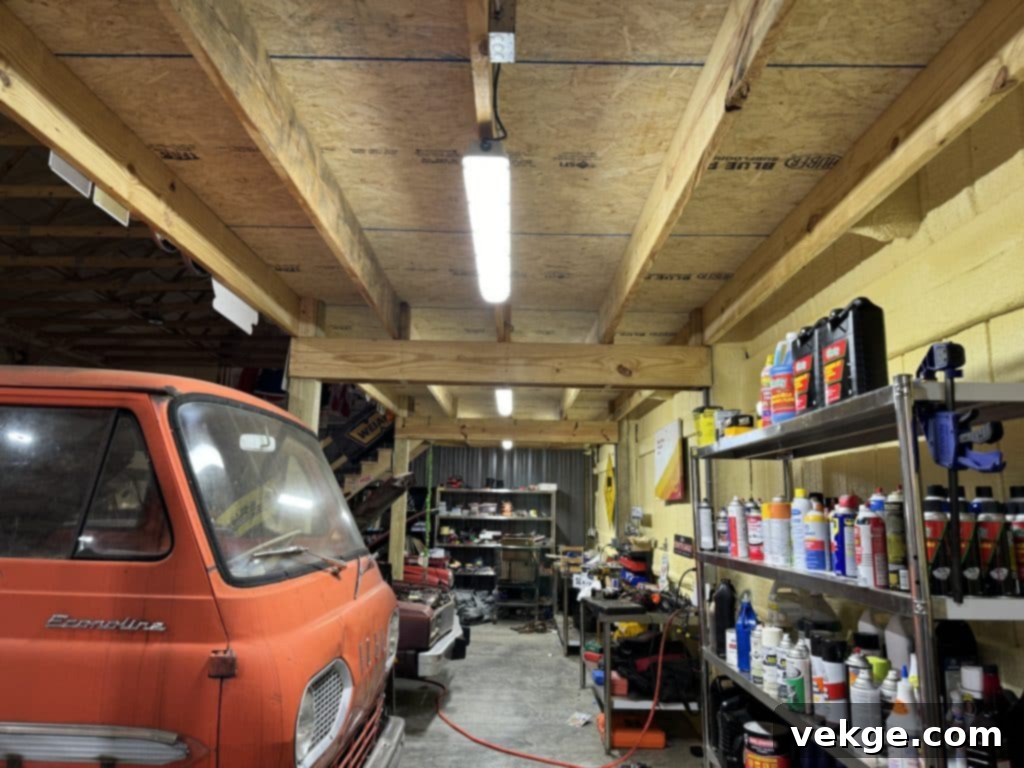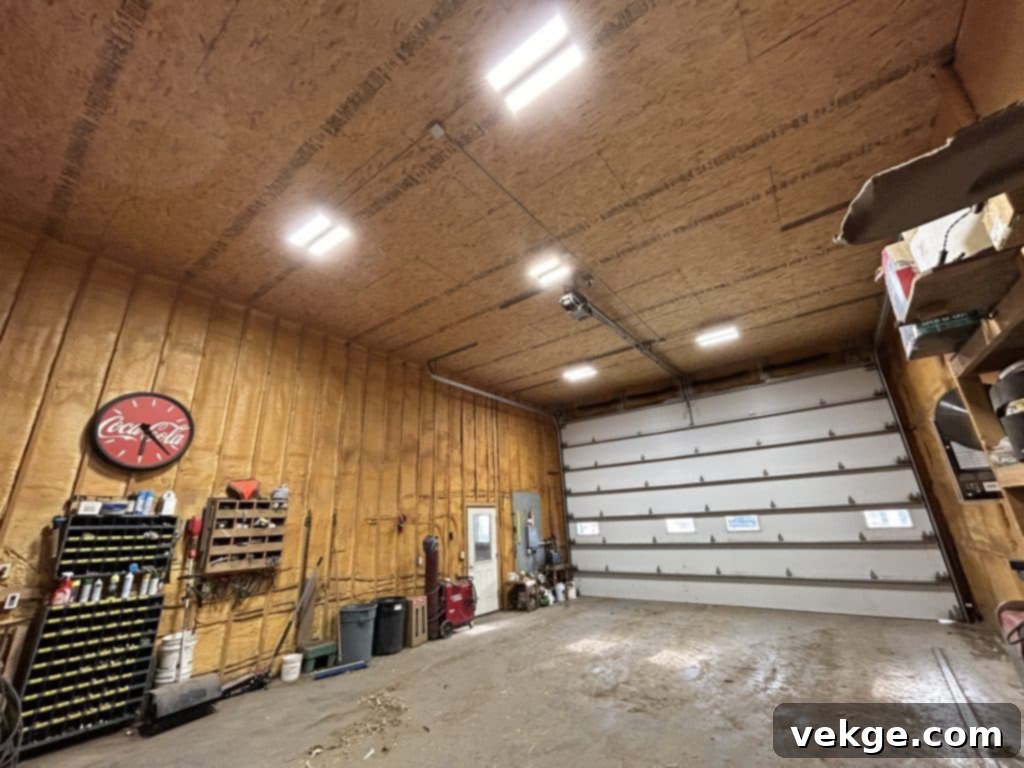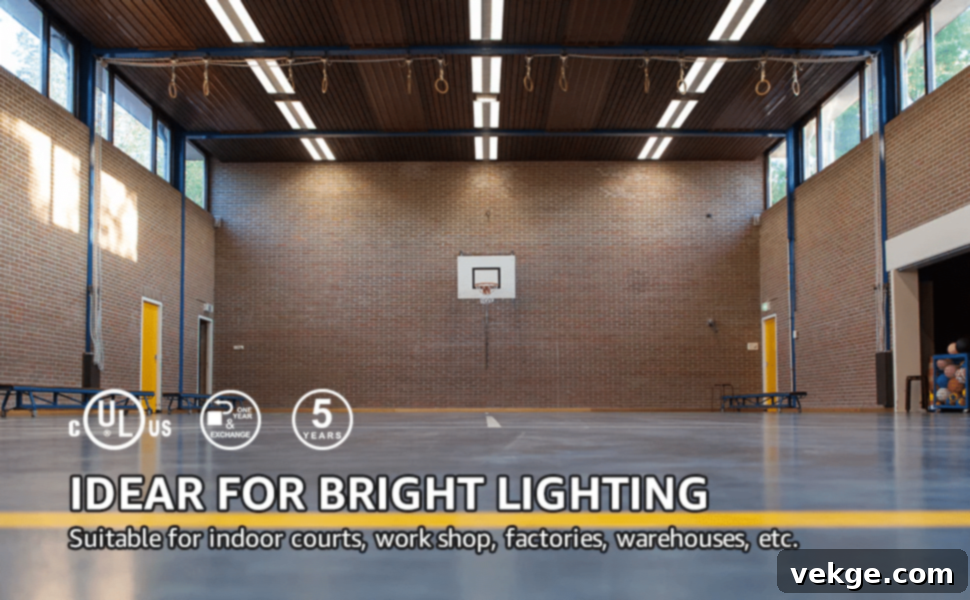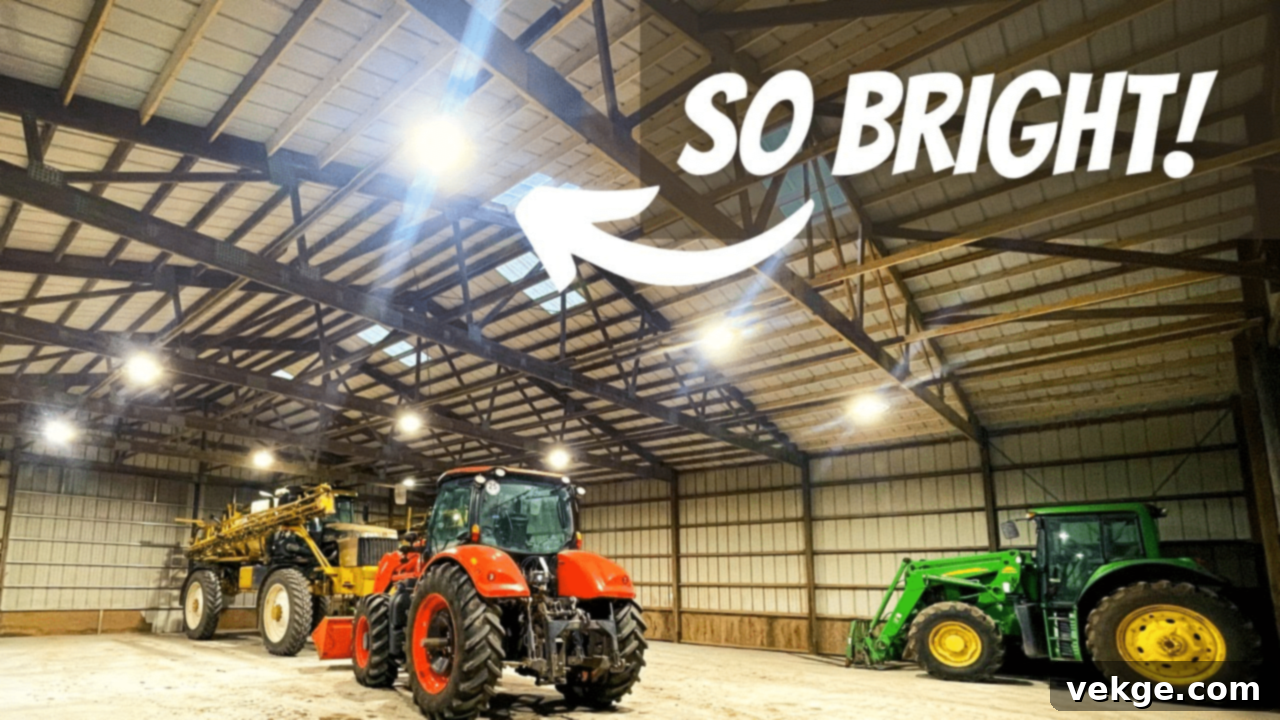Ultimate Guide to Choosing the Best Shop Lights: Enhance Productivity, Safety, and Aesthetics
Selecting the ideal lighting for your commercial space is a pivotal decision that impacts everything from employee productivity and safety to customer experience and overall operational costs. Whether you’re illuminating a sprawling warehouse, a bustling retail store, a detailed auto repair shop, or a cozy home garage, the right shop lights are crucial for establishing the perfect ambiance and functionality.
This comprehensive guide delves into five essential tips for choosing shop lights, offering insights and recommendations tailored to various needs and environments. We’ll explore how to make informed decisions that not only brighten your space but also enhance its efficiency, aesthetics, and long-term value.
Essential Shop Lights Shopping Tips:
1. Understand Your Space and Needs
Before you even begin browsing for shop lights, the first and most critical step is to thoroughly analyze your space and pinpoint your specific lighting requirements. This foundational understanding will guide all subsequent decisions and ensure your investment is well-placed.

Start by meticulously measuring the layout and size of your shop, including ceiling heights. Consider the primary activities conducted within each area. Is it a precision workshop requiring bright, focused light? A warehouse needing broad, uniform illumination? A retail space where product display is paramount? Or perhaps an office environment where comfortable, glare-free lighting is essential?
Identify any existing lighting challenges, such as dimly lit corners, areas prone to shadows, or excessively high ceilings that current fixtures struggle to illuminate adequately. Understanding these nuances will enable you to make informed decisions about light output (lumens), beam angles, and fixture placement, ultimately leading to a more efficient and effective lighting plan.
2. Choose the Right Lighting Fixture
Once you’ve thoroughly assessed your space and its lighting demands, the next crucial step is to select the appropriate lighting fixtures. The market offers a diverse range of shop lights, each designed for specific applications and environments.
- High Bay Lights: For expansive open spaces with high ceilings, such as manufacturing facilities, warehouses, gymnasiums, or large auto shops, high bay lights are the optimal choice. Fixtures like the Hero Series High Bay Lights are engineered to deliver powerful, ample illumination from significant heights, effectively brightening vast floor areas uniformly. Their robust construction and wide beam angles ensure that even the furthest corners receive adequate light.
- Low Bay Lights: For spaces with lower ceilings (typically under 20 feet) like smaller workshops, garages, or retail backrooms, low bay lights or linear LED fixtures are more suitable. They provide sufficient light without causing glare due to their proximity to the floor.
- Hexagon LED Lights: If aesthetics and a modern, distinctive look are important, particularly for spaces like barber shops, car detailing studios, showrooms, or even gaming rooms, hexagon LED lights can be an excellent choice. These not only provide effective illumination but also create a striking visual appeal that enhances the overall atmosphere and brand image.
- Linear LED Shop Lights: Often seen as fluorescent tube replacements, modern linear LED shop lights offer a sleek, energy-efficient solution for general lighting in workshops, garages, and utility areas. They provide even light distribution and are easy to install.
- Panel Lights: For offices, medical facilities, or modern retail spaces, LED panel lights offer a uniform, low-glare light source that integrates seamlessly into suspended ceilings, providing a clean and professional look.
Matching the fixture type to your space’s physical characteristics and functional requirements is key to achieving optimal lighting performance.
3. Prioritize Energy Efficiency and Longevity
In today’s environmentally conscious world, prioritizing energy efficiency and longevity is paramount when purchasing shop lights. Investing in energy-efficient options, particularly LED lighting, offers substantial long-term benefits for your business and the planet.

LED lights significantly outperform traditional lighting technologies like fluorescent, incandescent, and HID (High-Intensity Discharge) in several key areas:
- Lower Energy Consumption: LEDs use considerably less electricity to produce the same amount of light, translating into substantial savings on your monthly energy bills.
- Extended Lifespan: LED fixtures boast an impressively long operational life, often reaching 30,000 to 50,000 hours, and sometimes even more. This drastically reduces the frequency and cost of maintenance and bulb replacements, particularly in hard-to-reach areas.
- Durability: LEDs are solid-state lighting devices, making them more resistant to shocks, vibrations, and temperature fluctuations compared to fragile glass bulbs.
- Environmental Benefits: LEDs do not contain hazardous materials like mercury (found in fluorescent bulbs) and produce less heat, contributing to a cooler working environment and reducing the load on HVAC systems.
By opting for high-quality, energy-efficient LED shop lights, you not only reduce your carbon footprint but also achieve a rapid return on investment through reduced operational expenses.
4. Consider Specialized Lighting Solutions
Depending on the nature of your business or the specific tasks performed in your shop, you may require specialized lighting solutions designed to address unique environmental challenges or enhance particular aspects of your operations.
- Vapor-Tight High Bay Lights: For environments where dust, moisture, humidity, or corrosive elements are present – such as food preparation areas, car washes, industrial kitchens, or dusty workshops – vapor-tight high bay lights are indispensable. These fixtures are rigorously sealed and constructed to withstand harsh conditions, often carrying an Ingress Protection (IP) rating (e.g., IP65, IP66) to indicate their resistance to dust and water. They ensure consistent and reliable illumination even in the most demanding situations, preventing electrical hazards and extending fixture life.
- Aesthetic-Focused Lighting: If your shop is a retail space where product presentation and customer experience are paramount, then lighting solutions that prioritize aesthetics, color rendering, and design integration become crucial. The Will Series High Bay Lights, for example, might offer modern, attractive designs that complement your décor while delivering exceptional lighting performance. For retail, pay attention to the Color Rendering Index (CRI), which indicates how accurately a light source reveals the true colors of objects compared to natural light. A high CRI (80+ or even 90+) is vital for making products look their best.
- Task-Specific Lighting: For precision work areas, additional task lighting (e.g., adjustable arm lamps, under-cabinet lighting) can supplement general ambient light, reducing eye strain and improving accuracy.
- Explosion-Proof Lighting: In highly volatile environments with flammable gases or dust, specialized explosion-proof fixtures are mandatory for safety and compliance.
If you’re uncertain about which specialized solution is best for your unique requirements, consulting professionals at a reputable lighting expert is always recommended. They can provide valuable suggestions and help you navigate the complexities of specialized lighting.
5. Explore Dimming and Control Options
Incorporating dimming and advanced control options into your shop lighting system offers unparalleled convenience, flexibility, and further opportunities for energy savings. Modern lighting controls empower you to tailor the lighting environment precisely to your needs.
- Dimming Fixtures: Dimmable shop lights allow you to easily adjust the brightness level to suit different tasks or moods. For instance, a workshop might require maximum brightness during intricate work, but a lower light level for cleaning or less intensive tasks. In retail, dimming can help create different ambiances throughout the day or for special promotions. Dimming not only enhances user comfort but also extends the lifespan of LED fixtures and reduces energy consumption by supplying only the light truly needed.
- Advanced Control Systems: Beyond simple dimming, consider integrating more sophisticated control options:
- Motion and Occupancy Sensors: Automatically turn lights on when a space is occupied and off when it’s vacant, ideal for warehouses, storage rooms, or restrooms, maximizing energy savings.
- Daylight Harvesting Sensors: Detect the amount of natural light available and automatically dim or brighten artificial lights to maintain a consistent light level, greatly reducing energy waste near windows or skylights.
- Programmable Timers: Schedule lighting to turn on/off at specific times, aligning with operational hours.
- Smart Lighting Systems: Modern systems offer wireless control via smartphones or tablets, allowing for zoned lighting, custom scenes, and integration with building management systems, providing granular control and data on energy usage.
By investing in smart control options, you not only improve the user experience and adaptability of your lighting but also optimize energy usage, significantly minimizing long-term operating costs and contributing to a more sustainable business model.

Frequently Asked Questions About Shop Lights:
1. How long do LED shop lights last?
LED shop lights are renowned for their exceptional longevity. While varying by brand and quality, most high-quality LED fixtures are designed to last between 30,000 to 50,000 operating hours. This translates to three to five years of continuous 24/7 use, or significantly longer in typical commercial settings. Premium brands often offer designs with superior heat management and component quality, which can further extend their service life, sometimes up to 100,000 hours.
2. How should I choose the light color temperature?
Choosing the right light color temperature is essential for setting the appropriate mood and ensuring optimal functionality for your shop. Color temperature, measured in Kelvin (K), influences how the light appears:
- 4000K (Cool White): This temperature is ideal for spaces requiring prolonged focus and clarity, such as factories, workshops, parking lots, and utility areas. It provides a bright, neutral light that helps maintain alertness without being overly harsh.
- 5000K (Daylight White): Offering a balanced mix of brightness and clarity, 5000K is suitable for general tasks in offices, retail spaces, garages, and showrooms where a comfortable yet vibrant working or shopping environment is desired. It mimics natural daylight and enhances color perception.
- 6500K (Bright Daylight): Best suited for areas necessitating precise visibility and high contrast, such as hospitals, laboratories, art studios, or specific inspection areas. This very cool, crisp light can be intense and may not be ideal for general comfort but excels in demanding visual tasks.
- 2700K-3500K (Warm White): While less common for functional shop lighting, warm white is perfect for creating inviting and cozy atmospheres in cafes, boutiques, or hospitality settings.
Consider the primary activities and desired ambiance of your space when making your selection.
3. Why is lighting important in shops?
Effective lighting is more than just illumination; it’s a strategic tool for any business. In retail, proper lighting makes products shine, drawing customers’ attention to new arrivals, seasonal items, and discounted goods, directly impacting sales. For workshops and warehouses, good lighting is crucial for safety, reducing accidents and improving precision. It enhances visibility, minimizes eye strain for employees, and contributes to a more productive and positive work environment. A well-lit space also projects professionalism and attention to detail, which reflects positively on your brand image.
4. How does lighting affect customers?
The lighting system in your shop profoundly influences customer mood and behavior. A warm, inviting lighting scheme (lower Kelvin temperatures) can encourage customers to linger longer, explore products leisurely, and feel more comfortable. Conversely, cool, bright lights (higher Kelvin temperatures) can convey a sense of modernity, efficiency, and cleanliness, often preferred in tech stores, contemporary fashion boutiques, or environments where quick decision-making is encouraged. Strategic lighting can highlight key products, create focal points, and even guide customers through your store, ultimately enhancing their shopping experience and increasing the likelihood of a purchase.
Conclusion:
Choosing the appropriate shop lights is a critical investment in the functionality, safety, and aesthetic appeal of your commercial or industrial space. By carefully considering the unique requirements and characteristics of your environment – from ceiling height and operational tasks to energy efficiency goals and desired ambiance – you can make informed decisions that yield significant long-term benefits.
This comprehensive guide provides you with the essential tips needed to navigate the wide array of shop lighting options. Whether you’re upgrading an existing system or outfitting a new space, thoughtful planning will help you select the right lighting solutions to not only illuminate but also enhance the productivity, design, and overall success of your shop.
